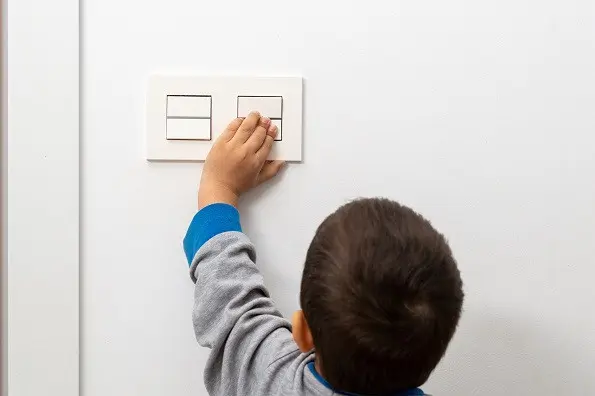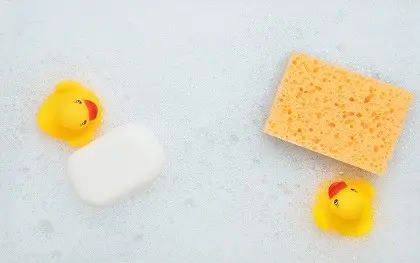Accidents in the household
Protecting and promoting the physical and mental health of your own children is a truly mammoth task and requires a great deal of planning skill. However, if you deal with the greatest dangers at an early stage, you will quickly turn your own household into a safe family home.
ACCIDENTS: CHILDREN ARE PARTICULARLY AT RISK
It is no longer a secret that most accidents happen in the home. Careless or even negligent behaviour repeatedly leads to dangerous situations for adults as well as children and young people. Medical professionals see this particularly frequently:
Burns
Chemical burns
Poisoning
and injuries to the head
Many of these accidents and injuries could have been avoided with careful and proactive behaviour. Just as healthy eating can only work with a clever plan, a careful approach to safeguarding the home environment is essential. Parents should be aware of the following eight risks.

ELECTRICITY AS A DANGER
Socket outlets, poorly secured cable connections in the wall and electrical appliances also pose a potential risk of dangerous electric shocks. Parents should therefore fit all sockets in their home with special child safety devices and not forget multiple sockets. Electrical appliances should always be kept out of reach, especially if there is water nearby. Shielding exposed cables with special covers also protects against electric shocks. Children should never handle electrical appliances unsupervised and should be familiarised with the dangers of electricity at an early age.
WATER AS A DANGER
It's hard to believe, but time and again children drown in their own homes. A danger that parents all too often underestimate lurks in the bathtub, children's pool or garden pond.
Wherever the child comes into contact with water and there is a potential risk of suddenly falling in or sinking, it is important to ensure complete supervision. Sometimes just a few minutes are enough to turn the planned bathing fun into a disaster.

SWALLOWABLE PARTS
Toddlers up to the age of three in particular often explore the world with their mouths. Parents should always bear in mind that they can also put decorative crystals, marbles or small stones in their mouths and choke on them. It is worth avoiding particularly small decorations and storing all small items safely in a lockable drawer or box. Young children should not be left unattended when playing with small building blocks or puzzles and dice games.
STAIRS AND ELEVATIONS
If there are stairs, a gallery, a balcony or other elevated danger points in the home, these should always be well secured. Special grilles at the foot and also at the top of stairs prevent unsupervised climbing, while doors to balconies or galleries should always be locked or also secured with grilles.
In areas where there is a risk of falling, it is important that children are always supervised and sensitised to the dangers. Otherwise, there is a risk of not only bruises and contusions, but also broken bones and, in the worst case, life-threatening head injuries.
TOXIC SUBSTANCES AS A DANGER
Numerous cleaning products and medicines make an exciting impression on children. Colourful liquids, fruit printed on cough syrup and small tablets that look like chocolate lentils quickly tempt children to try them out. This can result in life-threatening poisoning and burns to the oesophagus, stomach, skin and eyes.
Therefore, medicines and cleaning products should always be kept in lockable cupboards that cannot be reached and opened by children's hands. This also applies during regular house cleaning: young children in particular should always be taught that all bottles, jars and tubes must not be touched.
DRAWERS AND CUPBOARD DOORS

Painful bruises caused by drawers and cupboard doors are not uncommon. The same applies to room doors that children can open and close on their own. Parents should fit all potentially dangerous areas with child safety locks and special anti-trap devices. In the case of room doors, it is worth installing a guard that prevents the door from closing completely even when the door is slammed shut.
Also shelves
Shelves in themselves are a useful piece of furniture when it comes to storing books, decorations and toys. However, if a child climbs up an unsecured shelf or shakes it, dangerous injuries are inevitable. High shelves should therefore always be bolted to the wall to prevent them from tipping over. It is best for parents to place particularly heavy objects such as vases and stone figurines in places where they cannot fall onto the child from above.
FIRE AND HEAT
A lot of heat is generated in many places in the home. Cooker tops, pots with hot water, the coffee machine and the iron are just a few of the sources of danger that can lead to serious burns. It is important to take precautions here with protective grids and raised storage locations. If a soup pot or teacup is on the dining table, parents should not use a tablecloth. All too quickly, children will get their hands on a spill and the container of hot liquid will tip over.
Great care should also be taken with lighters and matches. They should also be out of reach of older children. As buxmann.de reports, although the law on the protection of minors does not yet provide for any meaningful restrictions on the purchase of lighters by children, the danger nevertheless remains. If a child plays with lighters or matches, it could not only injure itself, but also set the entire house on fire.

